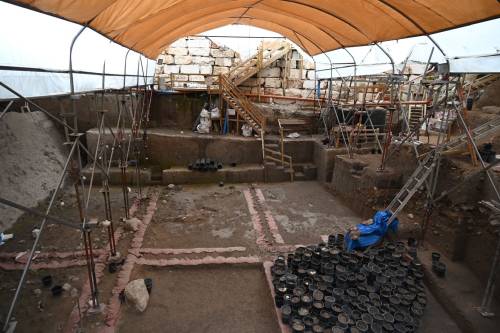Archaeologists have discovered at Megiddo a collection of ceramics possibly linked to Pharaoh Necho’s army (pdf here). Necho killed Judah’s King Josiah in 609 BC. The underlying journal article is available for purchase.
Archaeologists have launched a new excavation at Alexandrium/Sartaba, the first in more than 40 years.
The Roman period gate beneath Damascus Gate in Jerusalem has re-opened and now features a new exhibit.
The latest Jerusalem Tracker lists dozens of the newest publications related to the Holy City.
The 50th anniversary issue of Biblical Archaeology Review includes a number of important articles:
- “A Decade of Discoveries in Biblical Jerusalem,” by Yuval Gadot, Yiftah Shalev, and Joe Uziel
- “Nails or Knots—How Was Jesus Crucified?,” by Jeffrey P. Arroyo García
- “Breaking New Ground: Celebrating 50 Years of Biblical Archaeology”
- “New Directions: How Archaeology Illuminates the Bible,”
by Jennie Ebeling
Hybrid lecture at the Albright on March 12: “Tel Lachish 2013-2017: Excavations of the Palace Domestic Quarter, Area AA,” by Michael G. Hasel
Webinar on March 19: “Amulets and their Critics: Jews, Christians, and Samaritans in Late Antique Palestine,” by Megan Nutzman
Nathan Steinmeyer continues his series on geographical regions of Israel with a look at the Hula Valley.
Bryan Windle summarizes the top three reports in biblical archaeology in the month of February.
Chris McKinny and Kyle Keimer conclude their review of the best archaeological finds of last year on the Biblical World podcast.
Jerusalem University College has several short-term programs scheduled for the coming months:
- Historical and Geographical Settings of the Bible, June 2025 (registration ends today)
- Jesus and His Times, July 2025
- Pastor and Parishioner, October 2025
- Historical and Geographical Settings of the Bible, January 2026
HT: Agade, Joseph Lauer, Keith Keyser, Gordon Franz, Arne Halbakken, Ted Weis
